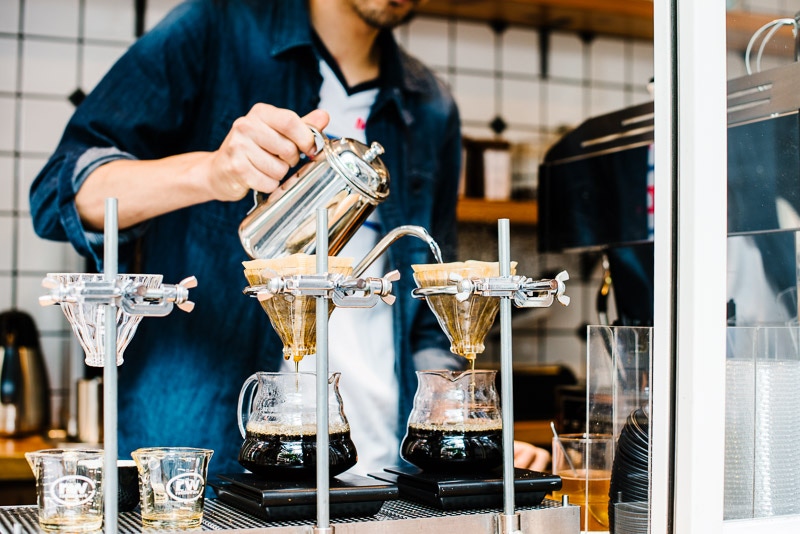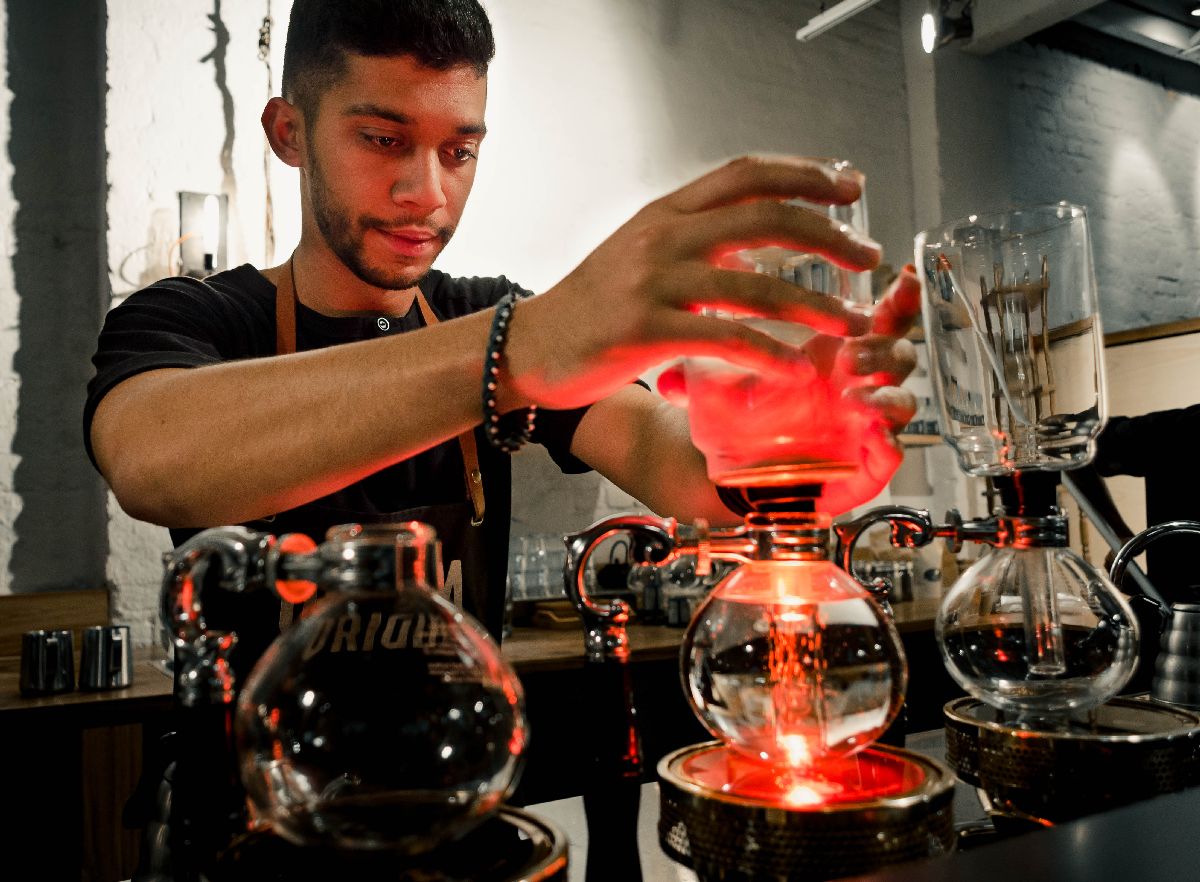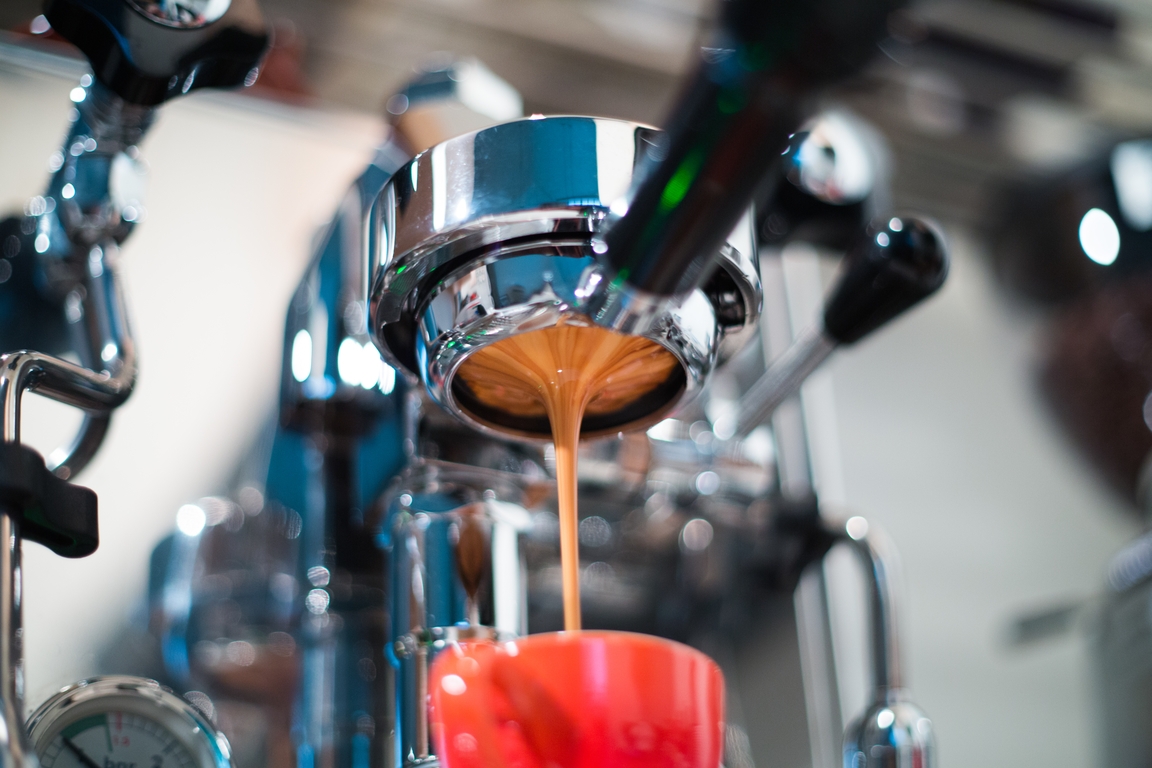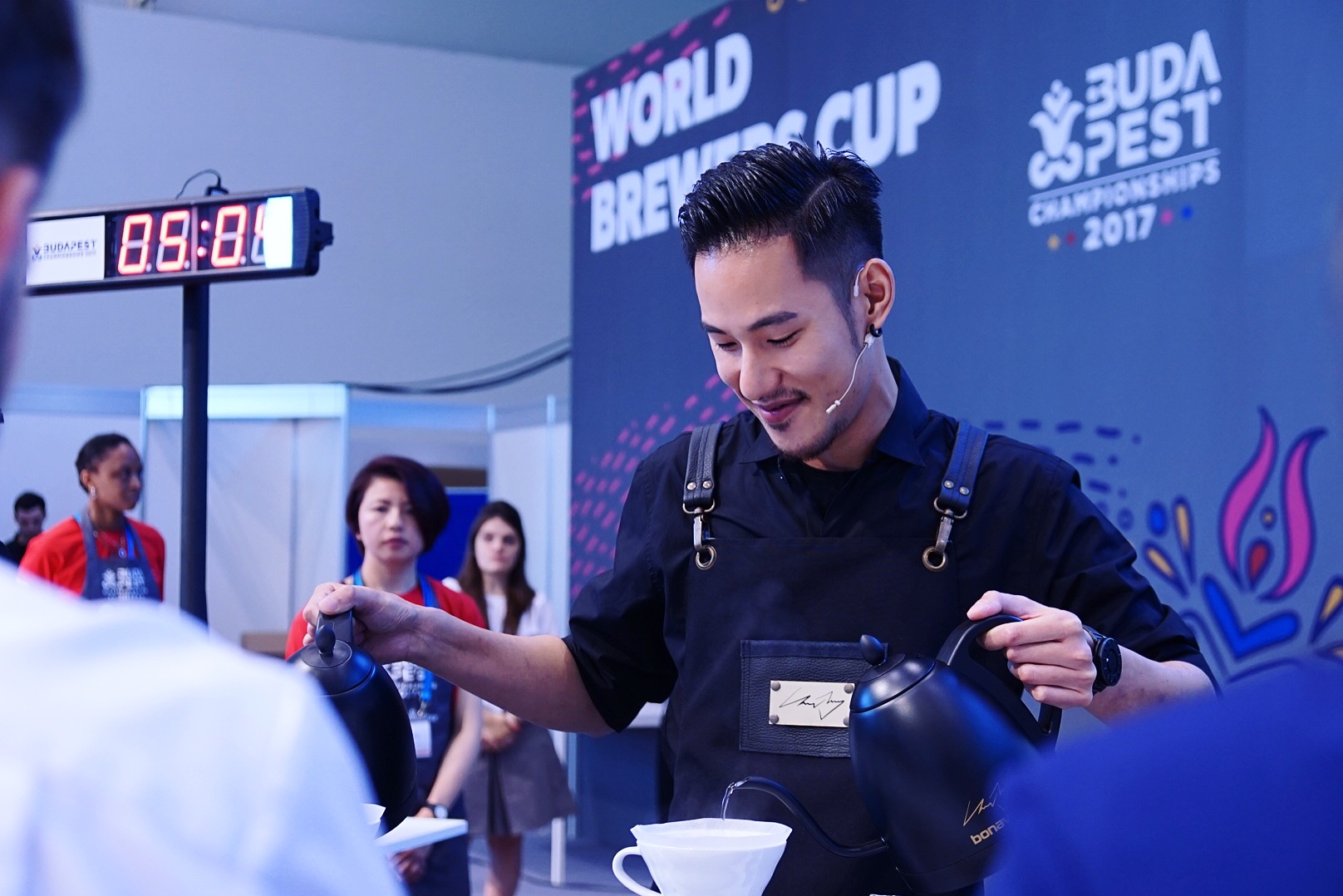
There are six essential elements of good coffee brewing that allow baristas to bring out the best characteristics of a roasted coffee. By applying the basic principles of the scientific method, coffee-lovers can experiment with these elements to discover the infinite variations of coffee.
These six elements were introduced by Ted Lingle, the founder of the Specialty Coffee Association of America, based on the initial work of Dr. E.E. Lockhart of the Coffee Brewing Institute and Michael Sivetz’s book, Coffee Technology. Based on their research, and along with the insights and expertise of three of National Barista Champions and Urnex Ambassadors – Steven Moloney of Sweden, Niall Wynn of Ireland, and Winston Thomas of South Africa – we explore these essential elements of brewing good coffee.
Correct Coffee-to-Water Ratio
Finding the right balance of coffee grounds and water affects both the strength and extraction of coffee. Shifting the balance in either direction can have a significant impact on the finished brew.
The most delicious range of flavor occurs when the coffee makes up 1.0% and 1.5% of the mass of beverage, and the water is between 98.5% and 99.0%. Coffee concentration of below 1.0% is considered too weak, and concentration of more than 1.5% is considered too strong.
With coffee extraction, the widely accepted range is between 18% and 22% of the coffee mass. An underextracted coffee (below 18%) will create flavors that are grassy to peanut-like. An overextracted coffee (above 22%) will result in bitter and astringent flavors.
The Specialty Coffee Association’s golden ratio of water-to-coffee is 18:1, which converts to a standard of 55 grams of coffee per 1000 milliliters of water.
2016 and 2017 Swedish Barista Champion Steven Moloney likes to compare coffee strength and extraction to mixing water and sugar – a cup of water will be sweeter (strong) when more sugar is added, but not all of the sugar will dissolve (low extraction). Conversely, a small amount of sugar will make a less sweet (weak) drink, but will more fully dissolve (high extraction) in the water.
Grind Size
For a balanced extraction of coffee to occur, the grind size of your coffee particle should be matched to the brewing method and type of equipment used. And the size of the grind must correspond with the brew time.
The general rule of thumb is that larger particles are matched with longer brewing times, and smaller particles are paired with shorter brewing times. This is because larger particles have less surface area and release flavor more slowly, and smaller particles have more surface area and release flavors more quickly. For example, cold brew requires an extra coarse grind size, drip methods use medium to medium-coarse particles, and espresso calls for a fine grind.
South African Barista Champion Winston Thomas uses a standard grind size guideline to match to a given brewing method, and then makes adjustments to get the most out that particular coffee.
“My personal preference is to begin with a coarser grind setting and adjust finer until I am happy,” Winston said. “This gives me a full spectrum of a coffee.”
Click here to learn five tips to elevate your grinder skills.
Brewing Method

- Steeping: Coffee grounds are mixed with hot water for a length of time, and then separated from the extract or brew without using a filter.
- Brew method: Cupping
- Decoction: This method uses extreme turbulence caused by near-boiling water to completely extract the coffee.
- Brew method: Turkish Coffee
- Percolation: A pump moves hot water repeatedly through the coffee particles, which is placed in a container that acts as a brewing chamber and means to separate the grounds from the drink.
- Brew method: Electric Percolator
- Drip Filtration: Hot water flows through the coffee grounds, and the extract drips into a container below. Here, the chamber’s shape and type of filter play important roles in the finished brew.
- Brew method: Chemex
- Vacuum Filtration: This method uses a two-chamber device, in which hot water is forced by steam from the lower to upper chamber, which contains the coffee. When heat is removed, steam condenses in the lower chamber, which creates a vacuum and pulls the coffee through the filter and into the lower chamber.
- Brew method: Siphon
- Pressurized Infusion: Coffee from this method has a very high concentration of solubles. Using a fast brewing time and extremely fine particles, pressurized water is forced through coffee grounds.
- Brew method: Moka Pot
When choosing a brew method, Irish Barista Champion Niall Wynn will consider the origin and process of the coffee. When using the drip filtration method, for example, he prefers using fully-washed coffees. But he is a proponent of using any means necessary to get the best result.
“When you get consistent results, that’s when you start to experiment,” Niall said. “As long as the results are delicious, that justifies the process.”
Proper Brewing Technique
There are three main variables controlled by the brewing equipment:
- Water Contact Time: It takes time for coffee particles to absorb the water, for the water to dissolve and extract the soluble material in the particle, and for the dissolved material to mix into the beverage. The ideal brewing time will contribute to optimal extraction and a uniform coffee.
- Water Temperature: The standard water temperature for brewing is between 195 and 205 degrees Fahrenheit, or 92 and 96 degrees Celsius. Water in this temperature range allows proper extraction of the coffee within a reasonable time.
- Turbulence: This is the process of the water mixing and passing through the coffee grounds. Sufficient turbulence is necessary to wet the coffee particles, allowing water to flow uniformly through them so the soluble material can dissolve. The three factors that control turbulence are force, frequency and duration.
To improve the result of your brewing technique, Niall encourages baristas to follow the guiding principles of the scientific method.
“The trick behind any good brewing technique is to change one variable at a time and see how it affects the result,” Niall said. “If it’s good, keep the change you’ve made, but if not, go back to your original recipe.”
Good Water Quality
Water makes up nearly 99% of a cup of coffee, so it’s no surprise that good quality water is necessary for good coffee. Water should be free of odor or taste and without visible impurities. But more than the taste of the water, factors such as mineral composition, pH level and amount of total dissolved solids (TDS) will affect how the coffee extracts and how the different flavor components of the coffee manifest themselves in the cup.
Water that is very soft or hard doesn’t make for a great cup of coffee, but can be treated before being used for brewing. Water quality often depends on your location. As a resident of Sweden, Steven usually gets excellent water straight out of the tap.
“For those not so lucky, you want to make sure the water is first as clean and fresh as possible,” Steven said. “Then you will want to run through a filter at the very least to remove limescale. This is not only important for the taste of your coffee, but also for the longevity of your coffee equipment.”
Regular descaling with a product like Dezcal will help to remove limescale buildup.
An Appropriate Filtering Medium
Without filters, you would end up with a mouthful of grinds with each sip of your coffee. Filters provide clarity to a coffee by separating the flavorful extracts from the insoluble materials, and are an important factor in determining the body of a coffee.
Filters fall into four general categories:
- Perforated Metal Plates: These plates have holes that allow extract to leave the brewing chamber, but it enables most fine particles to pass through as well, making for a murkier beverage.
- Woven Wire Screens: These screens have smaller holes compared to the metal plates, and provide slightly better clarification of the beverage.
- Cloth: Cloth filters that are stored in cold water can provide high beverage clarity by filtering out very fine particles.
- Paper: This yields the clearest coffee beverage. It is not the sturdiest material, but it should be strong enough to support the flow of the beverage. It should also not transfer any tastes to the brew itself.
Winston doesn’t believe there is a correct filter for brewing, only preference. The filter he chooses often depends on the person he is brewing for.
“I prefer metal filter or cloth filter in the morning,” Winston said. “I like to start my day with coffee with a heavier body and mouthfeel. As the day progresses I would switch over to paper filter for more focus on acidity and a lighter body.”
From Bean to Beverage
For any artistic endeavor, having a firm grasp of the fundamentals is necessary to creating a masterpiece. And the process of brewing coffee is a unique combination of art and science, making the building blocks that much more vital. Once you have an understanding of these six essential elements of good brewing, you can successfully transform a handful of beans into a delicious coffee.


